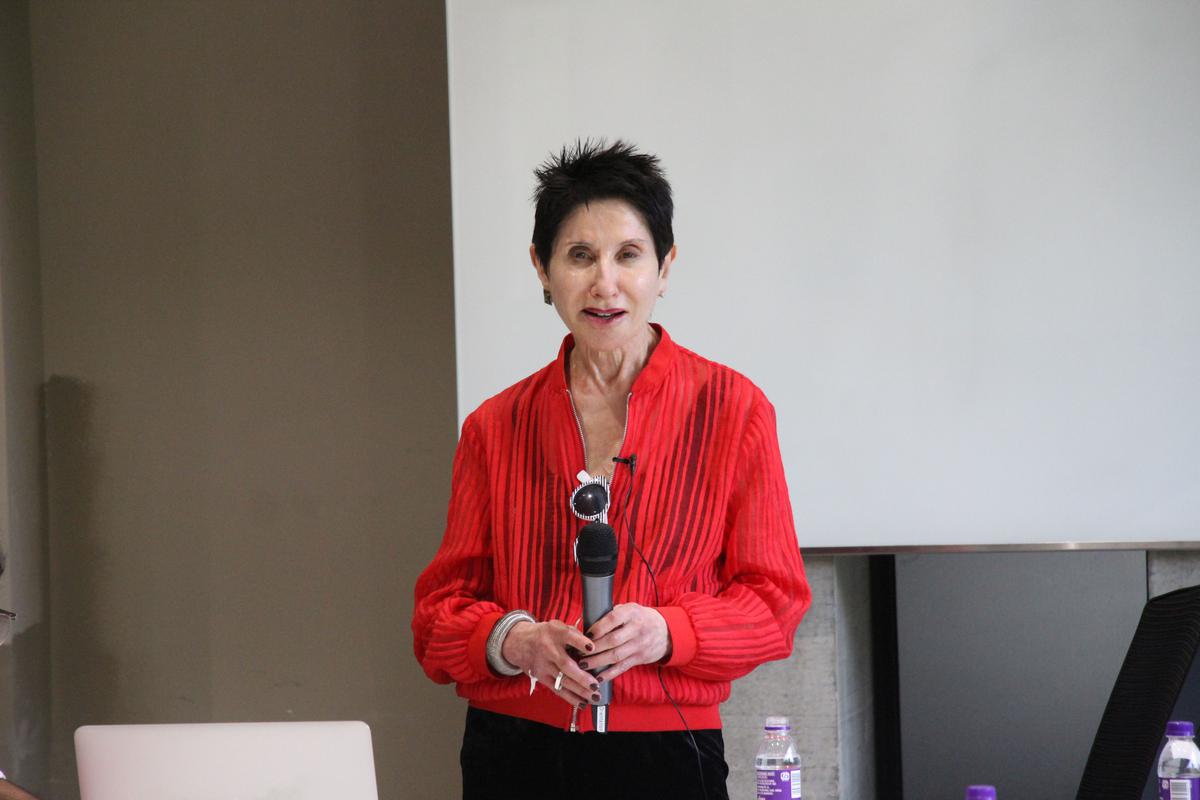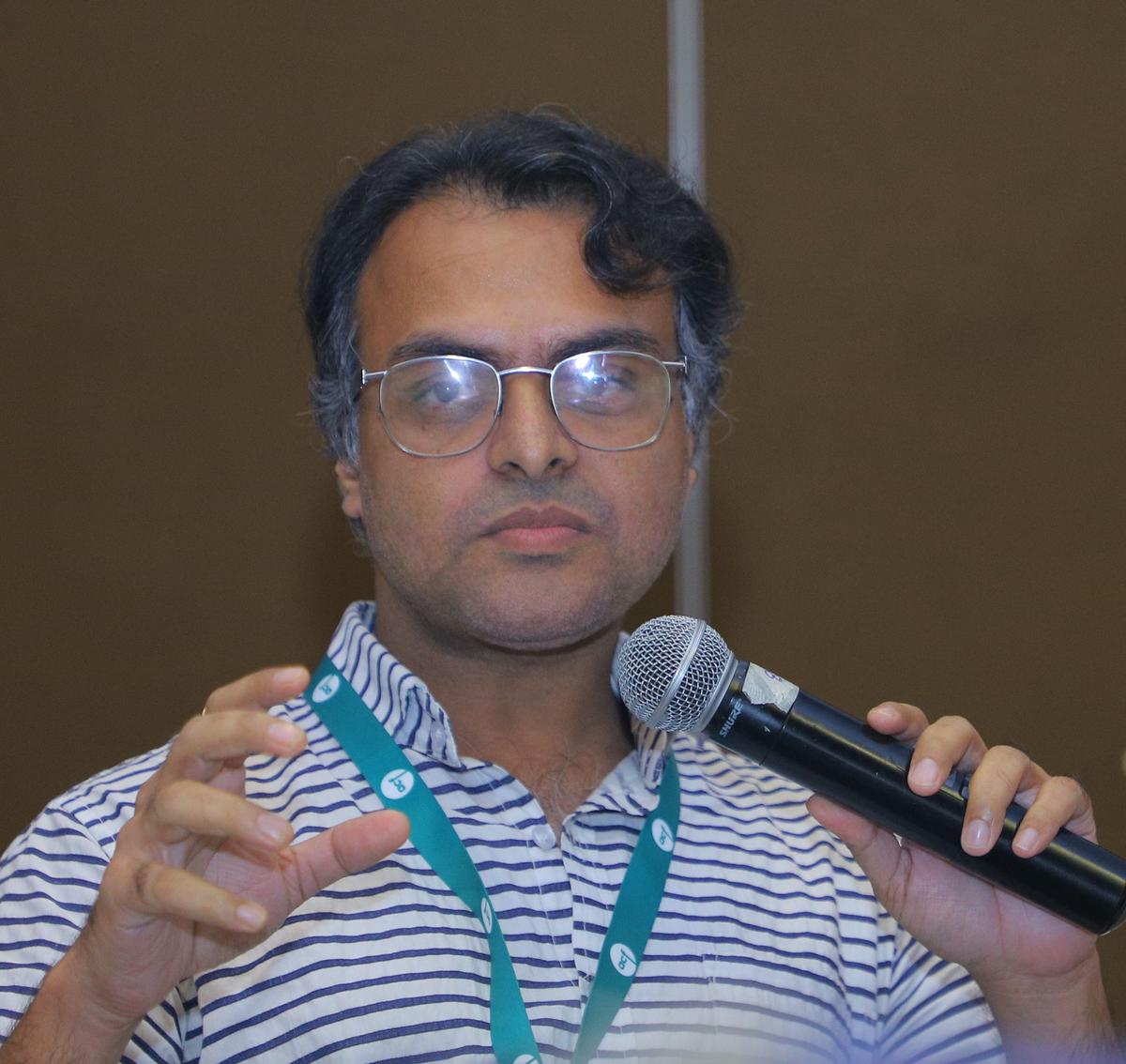The etymology for school is “leisure”. As a place of ‘leisure’, it refers to an environment where students can engage with the curriculum without the pressure of learning. But how many students fondly recall their experiences in school or college as being leisurely or enjoyable?
However, this is not a utopian or impractical idea. Take the Pre-Texts methodology, for example. This method of learning transforms the text into art. Students are engaged in a manual activities like drawing, sewing, sculpting, painting and so on, while the facilitator — teacher or parent — reads out a text from a curriculum. As the student internalises the text and manifests it into the art form of their choice, not only is art created but it also becomes a vehicle to encourage students to read. Reading and comprehension is the real outcome.
This simple and scalable pedagogic process has been successfully implemented in Latin America and Africa, where disadvantaged kids are being empowered with a newfound interest in reading and learning. Research has proven that it is equally effective in reducing dissonance and anxiety for learners.
To explore its effectiveness in Indian education, The Lakshmi Mittal and Family South Asia Institute, Harvard University, has partnered with FLAME University’s Centre for Knowledge Alternatives for a research project on ‘Enhancing Reading and Learning Outcomes through Pre-Text Method in Schools’. Its principal investigators are Prof. Doris Sommer, Ira Jewell Williams, Jr., Professor of Romance Languages and Literatures and of African and African American Studies, and Director of the Cultural Agents Initiative, Harvard University, Prof. Yugank Goyal, Associate Professor in Public Policy, and Founding Director, Centre for Knowledge Alternatives at FLAME University and Prof. Shivakumar Jolad, Associate Professor at FLAME University.
Prof. Sommer and Prof. Goyal share insights into the Pre-Texts methodology and the role it can play in promoting a love of reading among learners.

Prof. Doris Sommer | Photo Credit: Special Arrangement

Prof. Yugank Goyal | Photo Credit: Special Arrangement
What is the science behind this method?
Neuroscience has been trying to teach us what good educators, including parents, know: very little is learned without pleasure and less is retained. D.D. Winnicott, the groundbreaking British child psychoanalyst, promoted play as the vehicle for learning to explore and to love the world.
Centuries of good pedagogical practice and more recent developments in constructivist education confirm that experiential learning works. The implied corollary which Pre-Texts foregrounds is the pleasure that keeps students engaged with the experience.
How does it work?
Pre-Texts takes for granted that children, youth, and adults too may not yet enjoy reading, so we don’t force it. Instead, we appropriate the tradition of reading aloud while people are engaged in an art activity.
The teacher – now acting as a facilitator – provides the text from a curriculum. The students listen to a few pages while they make something and then propose the art form to explore the text. Students drive the activities, even if the text is “found” as raw material for choreography, murals, drama song, riddles, costumes, recipes, etc. The text is transformed into an art, and in doing so, students engage with text that they’d have otherwise ignored. And they will read it carefully because weaving a text into an art form means understanding the text critically.
Students are prompted to think of the question they want to ask the text. Teachers don’t ask students. Students do the investigation and are not the objects of scrutiny. This eliminates fear, competition, shame. It also stimulates critical reading. Curiosity and conversation deepen comprehension, without forcing any single “correct” perspective as teachers often do.
Given the range of possible art forms, Pre-Texts is a vehicle for reviving local and traditional, arts. One prompt in Pre-Texts is to tell one’s grandparent the lesson learned that day and ask them to propose a creative activity for the class, maybe to visit and demonstrate. We can recover local arts while raising marks at school through a simple protocol goes: 1. Reads aloud; 2. Asks the text a question; 3. Creates art from the text; 4. Reflects “What did we do?”
How much skilling would a facilitator require in the Pre-Texts method?
Very little skill, if this refers to professional training. Young people, even teenagers, can be good facilitators. The only requirement is to support students, which includes sitting in the circle of learners. Circles generate equality and collaboration while rows confirm authoritarianism.
How does this fit into an environment where reading is viewed as an academic goal?
Whether the teacher views it as an academic goal or a life skill, Pre-Text’s goal is to instil curiosity and a penchant for reading. When students begin to engage with the text and appreciate its nuances, they enjoy it even more and adopt this as a habit. With the rich cultural heritage and art forms in India, Indian teachers/facilitators will find it very easy.
What challenges do you foresee in its implementation in the Indian education system?
Practically, only the rigidity that school education often works with. Teachers in Pre-text should be open to relinquishing their authority and bringing students to the centre of discussions. Once they begin doing it, it will flip open tremendous energy, and teachers will begin liking it too.
That is why a short training period is probably more effective than over-professionalising education. This divide raises the question of whether parents need years of study and certification to support and guide their children. Or do they need high expectations, love, and enough advice to guide them but not so much that they extinguish curiosity and initiative? Pre-Texts can be a supportive bridge between government and private schools as standard facilitation that achieves the arts-integration goal established by the nation’s government. The model can be scaled easily because each teacher who practices Pre-Text can become a trainer for the others. With hardly any investment, this can become a powerful device for learning enhancements.
Can you comment on the current form of the language-arts programmes in Indian schools?
The National Curriculum 2005 recommended bringing arts into a curricular domain. But art has remained de-facto extracurricular activity in Indian schools. Our examination system neither demands art as a subject in schools nor facilitates arts integration into the core curriculum. It is seen as a hobby, not as integral to children’s socio-emotional and cognitive development. That is why the programme remains inadequate.
What are the benefits of promoting reading?
Reading empowers. It helps make sense of the world. Texts represent ideas that are organised. Reading texts, therefore, allows absorbing new ideas, getting inspired, and drawing pleasure. From a socio-economic point of view, reading advances society. Gutenberg’s printing press is often called the most profoundly impactful invention that changed history because it enabled reading.
A few interesting findings from your research...
Students prefer to collaborate rather than compete. Competition breeds aggression and corruption. They actually thank facilitators for the pleasure of seeing one another.
Students learn to “go off on tangents” and find more texts to offer their classmates. This enhances their critical thinking skills and builds more curiosity and love for reading.
Depression and anxiety are reduced and bullying practically vanishes.

